Octadecylamine Graft-modified Cellulose Nanofiber and Its Reinforcement to Poly(butylene adipate-co-terephthalate)Composites
2022-07-21LeileiHouJinghuanChenJingangLiu
Leilei Hou,Jinghuan Chen,*,Jingang Liu,*
1.China National Pulp and Paper Research Institute Co.,Ltd.,Beijing,100102,China
2.National Engineering Lab for Pulp and Paper,Beijing,100102,China
Abstract: Biodegradable polymers such as poly(butylene adipate-coterephthalate) (PBAT) have attracted great interest as alternatives to traditional petroleum-based polymers.Nonetheless,it is necessary to improve some properties of PBAT, such as mechanical strength.Cellulose nanofiber(CNF) can improve PBAT mechanical strength, but its dispersion and compatibility in the PBAT matrix require further improvement.In this study,octadecylamine(ODA)was utilized to graft-modify CNF to change the fiberto-fiber interaction and improve its compatibility with the PBAT matrix.PBAT composites with 1 wt% CNF were prepared using a masterbatch premixing method to avoid CNF aggregation during extrusion.The effects of ODA graft modification on CNF properties were studied; varying degrees of CNF modification were investigated for their effect on PBAT properties.ODA-modified CNF (OCNF)/PBAT melt-extruded composites possessing 17.2%higher tensile strength than pure PBAT polymer were obtained without affecting the thermal stability of PBAT.As a result, surface modification of CNF with ODA is an effective strategy for improving CNF-PBAT compatibility.
Keywords: cellulose nanofiber; octadecylamine; glutaraldehyde; PBAT;compatibility
The design and development of biodegradable polymers have attracted considerable attention, as they have the potential to mitigate increasingly severe environmental problems and meet the needs of the plastic market[1-2].These materials usually have superior renewable,degradable, and biocompatible properties compared to traditional petroleum-based polymer materials, but their mechanical strength and barrier properties need improvement[3].In addition, their higher cost (usually 3-4 times that of petroleum-based polymer materials)limits their large-scale application.
Copolyesters comprising aliphatic and aromatic units have been investigated in biodegradable polymers, due to their excellent mechanical characteristics and degradability.Poly(butylene adipate-co-terephthalate) (PBAT)is one of the most promising and widely used degra dable polymers[4].PBAT has mechanical and processing properties similar to the low-density polyethylene(LDPE), including high elasticity, high elongation at break, low tensile strength, and high water vapor transmittance[5].These excellent characteristics give PBAT broad application potential in agriculture,packaging, biomedicine, and other fields[6-7].However,as a potential substitute for polyethylene plastics, the high production cost and poor mechanical properties of PBAT remain significant obstacles to its wide application.The addition of low-cost fillers (such as starch or lignin) and reinforcing materials (such as nanocellulose) help to reduce the final cost and improve performance while maintaining the biodegradability of the composites[8].
Nanocellulose has many advantages including high strength, high specific surface area, high reactivity, low density,renewability,and biodegradability,which make it useful in composites,biomedicine,and food packaging[9-10].Nanocellulose has been widely investigated as a high-performance reinforcing medium in biodegra dable polymer materials such as thermoplastic starch(TPS), polylactic acid (PLA), and polycaprolactone(PCL)[11-12].However, two limitations hinder the potential use of nanocellulose as a mechanical property reinforcement agent.The first is the agglomeration of nanocellulose, owing to the strong hydrogen bonding interaction between cellulose molecules.The second is the weak compatibility and dispersion of nanocellulose with water-insoluble and low-polarity polymers (such as PBAT)[13].Surface modification of nanocellulose is considered an effective method to reduce its agglomeration tendency and improve its compatibility with the polymer matrix[14-15].
Some researchers have explored the effects of modified nanocellulose, including cellulose nanocrystals(CNC) and cellulose nanofibers (CNF), on the performance of PBAT.Morelli et al[16-17]used 4-phenyl butyl isocyanate, glutaric anhydride, and butanediol for the surface modification of CNC.Zhang et al[18]acetylated CNC using acetic anhydride.Pinheiro et al[13]modified CNC using octadecyl isocyanate.Edlund et al[19]hydrophobically modified CNF using cetylpyridinium chloride and hexyl acrylate.The dispersibility of surfacemodified nanocellulose in the PBAT matrix was improved in these investigations and positively affected the barrier or degradability properties.However, the mechanical properties of PBAT, such as tensile strength and elongation at break, were not significantly improved by the addition of the surface-modified nanocellulose.
In this study, octadecylamine (ODA)-modified CNF(OCNF)was obtained by glutaraldehyde(GA)crosslinking under aqueous conditions.The obtained OCNF was then mixed with PBAT to prepare a masterbatch.Finally,OCNF/PBAT composites were produced by meltblending the masterbatch and pure PBAT particles.The characteristics of the CNF before and after modification by ODA and GA were analyzed.The dispersion of modified CNF in a low-polarity medium and its effect on the mechanical properties of PBAT were investigated.
2 Experimental
2.1 Materials and reagents
Leaf bleached kraft pulp(LBKP)was provided by Asia Pulp & Paper Co., Ltd.Ecoflex® F Blend C1200 PBAT was purchased from Everest Biotechnology Co.,Ltd.Analytical grade ODA, GA, ethanol, acetone, anddichloromethane were purchased from Sinopharm Chemical Reagent Co.,Ltd.
2.2 Preparation and modification of CNF
2.2.1 Preparation of CNF
LBKP was diluted with water to a solid content of 3 wt%,then fibrillated using a Supermasscolloider-type disk mill (MKCA6-2J, Masuko Sangyo, Japan) with a gap clearance of 100µm at 1500 r/min until long fibers were not visible under an optical microscope (XWYVII-A, Zhuhai Warren Paper Technology Co., Ltd.,China)[20].The obtained samples were labeled CNF.
2.2.2 Surface modification of CNF
CNF was modified using a previously reported method[21],with only a few changes.In detail, CNF (5 g oven dry CNF) suspension was stirred in a 60℃ water bath at 400 r/min for 30 min.ODA (0.5, 1, and 2 mol/mol,based on the hydroxyl content of dry CNF) was dissolved in ethanol,and then the solution was added to the CNF suspension and stirred at 400 r/min for 1 h.A GA solution with an equal molar ratio to the ODA was added dropwise as a crosslinking agent, and the reaction continued for 4 h.After 4 h, deionized water and dichloromethane were used for washing and purification to remove the unreacted reagents and byproducts.Finally, OCNFs with different degrees of modification were obtained and recorded as 1#OCNF,2#OCNF, and 3#OCNF (the corresponding dosages of ODA are 0.5,1,and 2 mol/mol).
2.3 Preparation of OCNF/PBAT composites
First, water in the CNF and OCNF suspensions was replaced with dichloromethane.The mixture was sonicated for 30 min under 300 W in an ice-water bath and then sonicated 20 times under 300 W for 5 s each time using a cell crusher (JY92-II, Shanghai Joyn Electronic Co.,Ltd.,China)to ensure uniform dispersion of CNF and OCNF in dichloromethane.PBAT particles were added to the dichloromethane suspension of OCNF, stirred for dissolution, then cast and dried to obtain a OCNF/PBAT composite film containing 15 wt%OCNF.
The OCNF/PBAT composite film containing 15 wt%OCNF was cut into fragments, dried, and blended with pure PBAT particles using a melt extrusion process.After injection molding, OCNF/PBAT composite splines with an OCNF content of 1 wt% were prepared.The temperatures of the four regions of the micro twin-screw extruder (SJZS-10B, Wuhan Ruiming Experimental Instrument Manufacturing Co., Ltd., China) were set to 115℃,135℃,145℃,and 155℃,respectively.The screw speeds were set to 25.5 and 25.0 r/min,respectively.The cycle mixing time was 5 min and the circulating speed was 50.0 r/min.The barrel and template temperatures of the microinjection molding machine (SZS-15, Wuhan Ruiming Experimental Instrument Manufacturing Co.,Ltd., China) were set to 160℃ and 75℃, respectively.The injection and pressure holding times were 5 and 20 s,respectively,and the pressure was 0.6 and 0.2 MPa,respectively.
2.4 Characterization
2.4.1 Morphology analysis
The appearance and morphology of the CNF before and after modification were observed using scanning electron microscopy (SEM, S-3400 N, Hitachi, Japan)at a voltage of 10 kV.Before observation, the CNF samples were diluted to 0.01% with deionized water,freeze-dried, and subjected to surface gold spraying treatment.
2.4.2 Particle size distribution
CNF particle size distribution before and after modification was analyzed using a Malvern particle sizer(Mastersizer 2000 Hydro, Malvern Instruments Co., Ltd.,UK).An appropriate amount of the CNF sample was weighed into the detection beaker so that the laser obscuration value of the analysis software was more than 10%, followed by mechanical stirring and ultrasonic dispersion for 3 min.The detection conditions were set at a refractive index of 1.33, the medium was deionized water, and the average value was obtained by parallel scanning three times.
2.4.3 Elemental analysis
The percentage contents of C, H, O, and N in the combustion products of the samples were quantitatively analyzed using an elemental analyzer (Vario EL cube,Elementar, Germany), applying the principles of gaschromatography.The surface substitution degree (DS)of ODA-modified CNF can be calculated from the content of N (N) obtained by elemental analysis using Eq.(1):

where 14, 162, and 351.64 correspond to the relative molecular mass of N, the relative molecular mass of a D-glucopyranoside of CNF, and the relative molecular mass increased by grafting GA and ODA onto a CNF hydroxyl group,respectively.
2.4.4 Fourier-transform infrared (FT-IR) spectroscopy analysis
CNF chemical structures before and after modification were analyzed using an FT-IR spectrometer(Tensor 27,Bruker, Germany).After drying and pulverizing, the CNF samples were tested using the potassium bromide tableting method in the wavenumber range of 400-4000 cm-1.
2.4.5 Water contact angle and dispersion analysis
CNF surface hydrophobicity before and after modification was analyzed using a dynamic water contact angle meter (Tensor 27, Bruker, Germany).Different CNF suspensions were first poured into aluminum foil boxes and dried to obtain CNF membranes.Water droplets with a volume of 3 μL each were dropped onto the CNF membrane surface.The real-time contact angle changes of the droplets were measured using a highspeed camera and analysis software.The contact angle data of the first 3 min were recorded, and the average value was obtained from three parallel measurements.All the tests were performed at 25℃ and 50%RH.
CNF surface properties before and after modification were evaluated based on the dispersion properties of CNF in dichloromethane.The aqueous CNF suspension was stirred vigorously with an equal volume of dichloromethane for 3 min and then allowed to stand for 3 days to observe the stratification of the mixture.
2.4.6 Mechanical property analysis
The mechanical properties of the OCNF/PBAT standard splines were tested using an electronic strength tester(YG026G-III, Wenzhou Fangyuan Instrument Co.,Ltd.,China).The standard spline was prepared by injection molding according to the standard GB/T 1040.2—2006.The test speed was 100 mm/min, and the clamping distance was 50 mm.Five samples of each type were tested to obtain average values.
2.4.7 Thermogravimetric analysis(TGA)
The thermal stability of the OCNF and OCNF/PBAT composites was analyzed using a thermogravimetric analyzer (TGA/DSC I, Mettler Toledo, Switzerland).Five milligrams of the sample were placed in a crucible.The thermal degradation curve of the sample was recorded under a nitrogen flow rate of 50 mL/min, at a heating rate of 10℃/min,with a measurement temperature range of 30-800℃.
3 Results and discussion
3.1 Morphology and size distribution
The CNF samples were freeze-dried and observed using SEM to investigate micromorphology changes after ODA modification.SEM images of CNF and OCNF samples are shown in Fig.1.CNF micromorphology did not significantly change after ODA modification,and all the samples show staggered filaments and flocculent structures, which may be formed by fiber aggregation during freeze-drying[22].From the SEM images of 1#OCNF-2#OCNF, it can be seen that an increase in the modification degree results in a decrease in the flocculent structure of the fiber.This may be related to the change from hydrophilic to hydrophobic on the CNF surface after ODA modification, which reduces the formation of hydrogen bonds and fiber agglomeration.In addition,the ODA chain adsorbed on the CNF surface has a low surface energy chain, which improves the dispersion property of CNF.
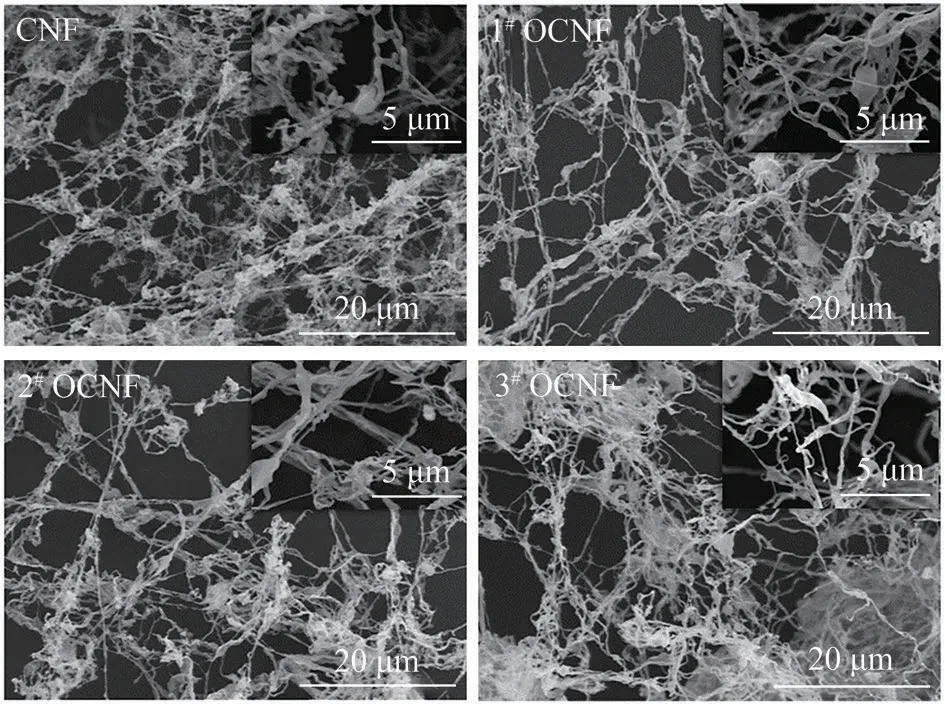
Fig.1 SEM images of CNF and OCNF samples
CNF size distribution before and after ODA modification is shown in Fig.2.The median particle size (d(0.5)) of the initial CNF was 0.31 μm.As the CNF modification degree was increased, the particle size distribution gradually increased to the high-value range (20-100 μm).Thed(0.5) values of 1#OCNF, 2#OCNF, and 3#OCNF were 4.01, 9.86, and 10.91 μm,respectively.This can result from the decreased energyof the CNF surface after hydrophobic alteration, which causes it to disperse water poorly and to form fiber flocs,resulting in larger observed particle sizes[23].
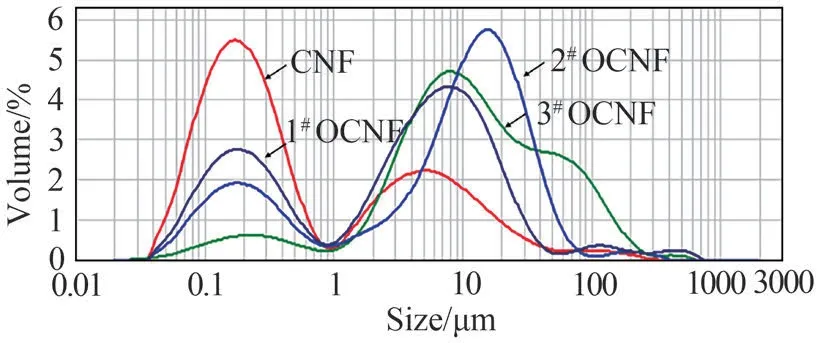
Fig.2 Particle size distribution of CNF and OCNF samples
3.2 CNF DS and chemical structure after ODA modification
The reaction principle for the surface modification of CNF is shown in Fig.3.GA was used as a coupling agent to bind CNF and ODA.CNF,with numerous—OH groups on its surface, reacts with GA to form hemiacetal bonds.Subsequently, the ODA amino group reacts with another free aldehyde group of GA to form a Schiff base, which fixes ODA and exposes it to the surface of CNF to form a superhydrophobic surface.

Fig.3 Schematic diagram of OCNF preparation
The elemental analysis results for 1#OCNF-3#OCNF are shown in Table 1.The trend of the DS of OCNF relative to the dosage of ODA is shown in Fig.4.The C, H, O, and N contents of CNF were 41.31%, 6.61%,52.06%, and 0, respectively.An increase in the degree of modification resulted in increased C and H contents of OCNF.In contrast, the O content decreased, which is consistent with previously reported literature results[23].The DS of 1#OCNF-3#OCNF calculated from N were 0.07, 0.19, and 0.21, respectively.It can be seen that the DS of CNF plateaus as the ODA dosage increased.

Table 1 Element analysis results of different samples
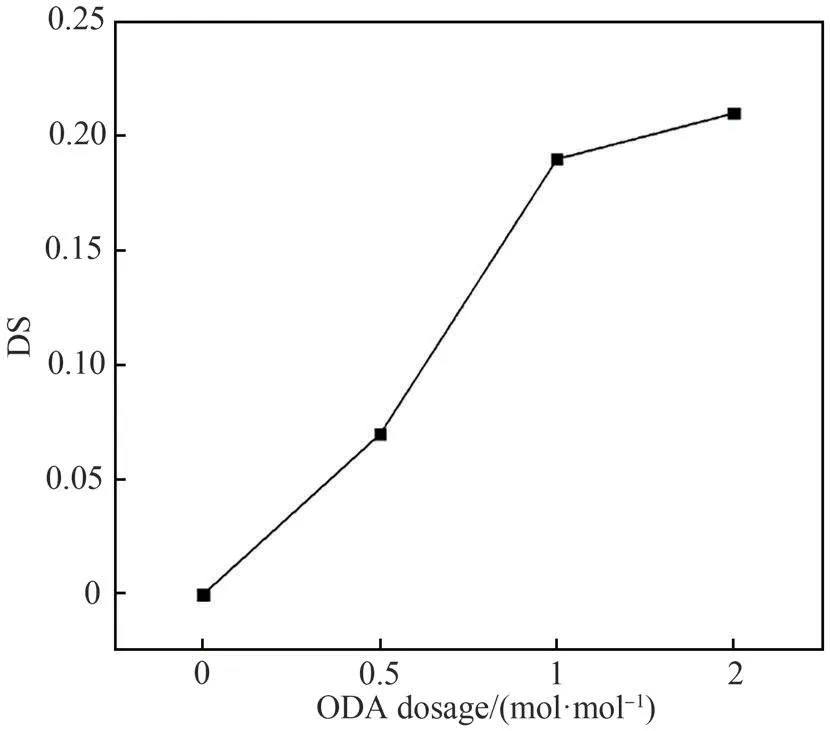
Fig.4 DS of OCNF varies with the dosage of ODA
CNF and OCNF chemical structures were analyzed using FT-IR, as shown in Fig.5.All FT-IR spectra show the typical characteristic peaks of cellulose[24].The peaks at approximately 3400 and 2920 cm-1correspond to the —OH and —CH stretching vibration absorption peaks, respectively.The peaks at 1370,1050, and 897 cm-1correspond to the —CH bending vibration absorption peaks,C—O—C stretching vibration absorption peaks (pyranose ring), and C1—O—C4deformation peak of theβ-glycosidic linkage,respectively[25].The reaction of ODA with the CNF hydroxyl groups was generated by GA crosslinking.The aldehyde group in GA was crosslinked by the formation of a hemiacetal with a hydroxyl group.Theother free aldehyde group formed an imine bond with the ODA amino group.The most notable changes in the OCNF FT-IR spectra are the enhancement of the —CH stretching vibration and deformation peak intensities at 2850-3000 and 1460 cm-1, and a broad —C=N peak near 1650 cm-1.In addition, the weakening of the hydroxyl peak,enhancement of the C—H peak,and the hemiacetal peak around 710 cm-1further indicate that ODA successfully reacted with CNF via GA crosslinking.
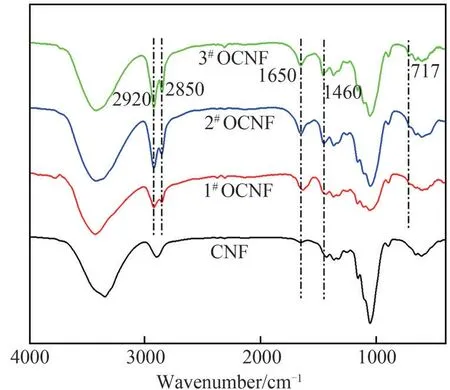
Fig.5 FT-IR spectra of CNF and OCNF samples
3.3 OCNF water contact angle and its dispersibility in solvents
The water contact angles of CNF and OCNF membranes with different degrees of modification are shown in Fig.6.The water contact angle at 180 s for the CNF is approximately 57.4°, and the water contact angles of 1#OCNF-3#OCNF withDSof 0.07,0.19,and 0.21 are 93.9°,105°,and 107.6°,respectively.During the modification process, the ODA long hydrocarbon chains were grafted onto the CNF surface through GA crosslin king,thereby helping to reduce the CNF surface energy and endow them with hydrophobicity.Therefore, the hydrophobicity of the resulting OCNF increased as the degree of ODA modification increased.

Fig.6 Water contact angles of CNF and OCNF samples over time
In addition, the effect of ODA modification on CNF dispersion in solvent systems was investigated.CNF and OCNF samples were added to the water/dichloromethane(H2O/CH2Cl2) system, shaken vigorously, and allowed to stand for three days.Since dichloromethane is immiscible with water, layering occurs when dichloromethane and water are mixed.The density of methylene chloride is greater than that of water; therefore, the lower layer is dichloromethane, and the upper layer is water.The dispersion states of the CNF and OCNF samples in the water/dichloromethane system are shown in Fig.7.Owing to its hydrophilic nature, unmodified CNF dispersed in the water layer after standing.After ODA modification, the CNF surface changed from hydrophilic to hydrophobic.It gradually deposited downward and stably dispersed in dichloromethane after standing.At the same time, an increase in the substitution degree,gradually deepened the color of the OCNF.It can be seen that ODA-modified CNF has good dispersibility in organic solvents.

Fig.7 Dispersion of CNF and OCNF samples in a H2O/CH2Cl2 system
3.4 Mechanical properties and thermal stability of the OCNF/PBAT composites
The mechanical properties of the CNF/PBAT and OCNF/PBAT composites are shown in Fig.8.The tensile strength and elongation at break of the purePBAT spline were 25.6 MPa and 476.2%, respectively.When 1 wt% 1#OCNF was added, the tensile strength and elongation at break of PBAT increased by 4% and 1.4%, respectively.The tensile strength of the OCNF/PBAT composites increased continuously with theDSof CNF.The tensile strength of the 3#OCNF/PBAT composite was 17.2% higher than that of pure PBAT spline, which is attributed to the uniform dispersion of OCNF in the PBAT matrix and the formation of an enhanced network.The modified CNF surface changed from hydrophilic to hydrophobic, and the brush-like structure formed by the ODA molecular chains on the CNF surface also avoided CNF flocculation and promoted the formation of a fiber-reinforced network.Stress is transmitted from the PBAT chain to the OCNF crosslinked network, strengthening and toughening when subjected to an external force.However, with increasing substitution degree, the elongation at break of OCNF/PBAT composites gradually decreased.This may be caused by the rigid network formed by OCNF which results in a large amount of local stress concentration[26].

Fig.8 Mechanical properties of CNF/PBAT and OCNF/PBAT composites
The TG and DTG curves of the CNF and OCNF samples are shown in Fig.9(a)and Fig.9(c),respectively.The initial degradation temperature (Ton), maximum thermal degradation temperature (Tmax), and residual mass at 800℃(ash)data for all the samples are shown in Table 2.The slight mass loss within 100℃ for allsamples can be attributed to the evaporation of residual solvent or adsorbed water[20].The mass loss at 200℃-500℃ is mainly caused by thermal degradation of the cellulose structure, including depolymerization,dehydration, and decomposition of glucose units[27].Tonof CNF is approximately 283.0℃, thermal degradation mainly occurs in the range of 280℃-400℃, andTmaxis approximately 322.2℃.Compared with CNF, theTonof the OCNF slightly decreased, which was due to the slight degradation of long-chain ODA molecules.However, theTmaxof OCNF increased, which may be due to the imine bond and acetal improving its thermal stability.
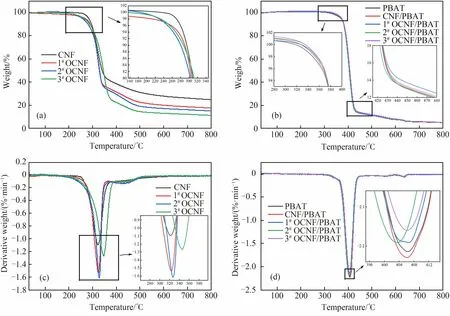
Fig.9 (a) TG curves of CNF and OCNF samples; (b) TG of PBAT, CNF/PBAT, and OCNF/PBAT composites; (c) DTG curves of CNF and OCNF samples;(d)DTG curves of PBAT,CNF/PBAT,and OCNF/PBAT composites
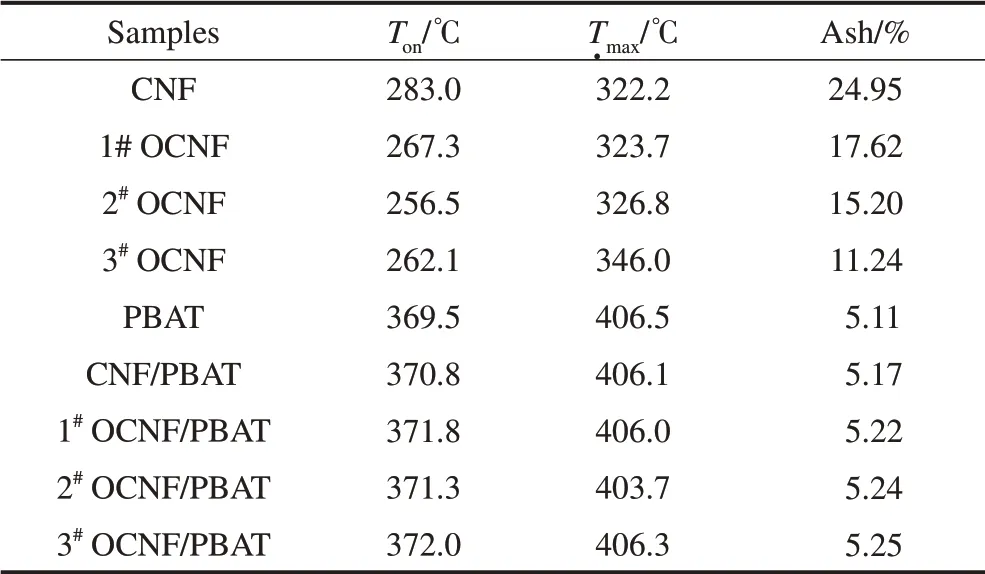
Table 2 Ton,Tmax,and ash content for all samples
The TG and DTG curves of the OCNF/PBAT composites are shown in Fig.9(b)and Fig.9(d),respectively,and the relevant data are shown in Table 2.It can be seen from Fig.9(b), Fig.9(d), and Table 2 that theTonof PBAT is approximately 369.5℃, and theTonafter adding OCNF increased slightly.In addition, neitherTmaxnor the residual mass at 800℃ changed significantly.For all the samples, the thermal degradation curves of the composite materials are not significantly different,which may be due to the small amount of OCNF added.Therefore, OCNF had no noticeable effect on the thermal stability of PBAT.
4 Conclusions
In this study,we demonstrated the reinforcing potential of surface-functionalized cellulose nanofiber (CNF) in poly(butylene adipate-co-terephthalate) (PBAT) composites.CNF was selectively grafted with octadecylamine (ODA)and glutaraldehyde (GA), and when the dosage of ODA was twice the molar mass of CNF,the water contact angle of the ODA-modified CNF (3#OCNF) increased from 57.4° to 107.6°, enabling it to be dispersed in dichloromethane.All OCNF samples were individually dispersed and strongly interacted with the PBAT matrix,causing the resultant OCNF/PBAT composites to have higher tensile strength than pure PBAT.Compared with pure PBAT,when 1 wt%3#OCNF was added,the tensile strength of the OCNF/PBAT composites increased by 17.2%, but the elongation at break decreased slightly.In addition, the addition of OCNF had little effect on the thermal stability of the OCNF/PBAT composites.Therefore, CNF surface modification with ODA is an effective method to improve the compatibility between CNF and PBAT and significantly strengthen PBAT.CNF surfaces can be finely grafted, allowing the reinforcing potential to be fully utilized.This simple and efficient method for modifying CNF surfaces can be applied in the development of sustainable, lightweight, and highstrength nanocomposite materials.
Conflict of interest
The authors declare no conflict of interest.
Acknowledgments
The authors are grateful for financial support from the National Key Research and Development Program of China(Grant Nos.2017YFB0307901 and 2017YFE010 2500).
杂志排行
Paper and Biomaterials的其它文章
- Nanocomposite Hydrogel Materials for Defective Cartilage Repair and Its Mechanical Tribological Behavior—A Review
- Review of Carbon Dots from Lignin:Preparing,Tuning,and Applying
- NIR-responsive Collagen-based Sponge Coated with Polydimethylsiloxane/Candle Soot for Oil-Water Separation
- Formation and Collapse of Cellulose Nanocrystals and Hydrophobic Association-induced Dual Cross-linked Nanocomposite Hydrogels:A Rheological Study
- Stabilizing Pickering Emulsions Using Octenyl Succinic Anhydride Modified with Cellulose Nanofibrils
- Technical Evaluation of Hybrid Clones of Corymbia spp.to Produce Market Pulp
